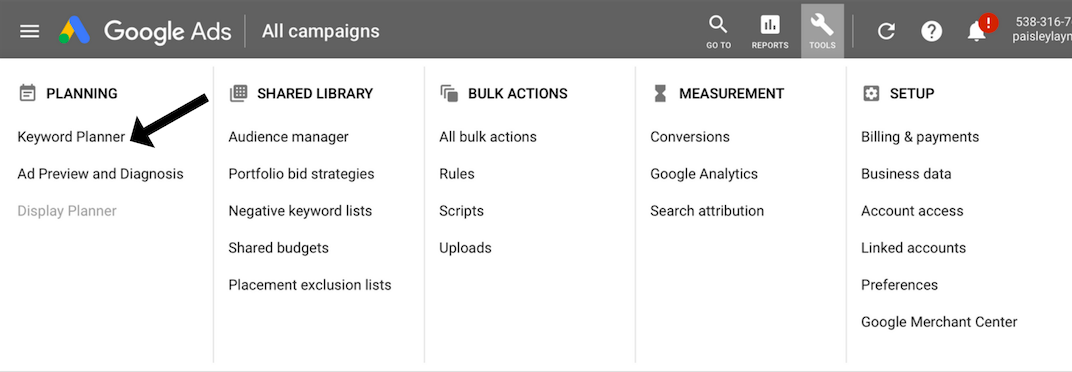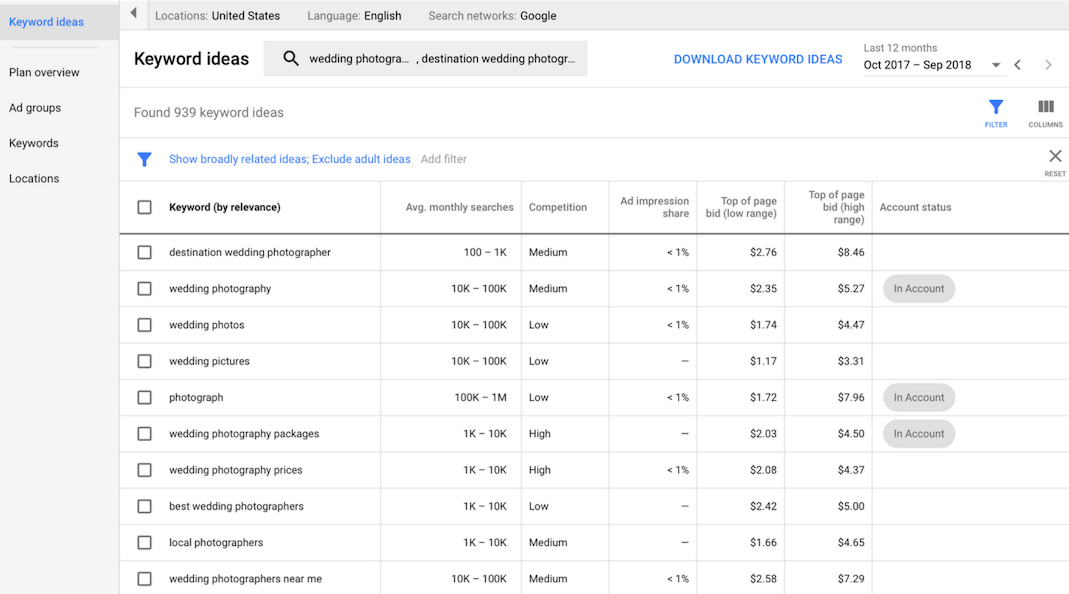
I wish someone had given me SEO tips back when I started my business.
In 2011, I started Paisley Layne Photography and began my journey into the world of small business ownership. At the time, I had no idea how to run a small business—I just knew that I wanted to create beautiful pictures for people.
As my business started to grow, I quickly realized that in order to sustain long-term success, I needed to do more than just take pretty pictures. I needed to learn the ins and out of marketing, SEO, social media, and all kinds of other things that made my head spin.
I learned that if I wanted my website to be seen by more than just my friends and family, I would need to dive into the world of search engine optimization. Of course, I headed to a search engine to start my research.
To make that journey of discovery a little easier for you, I’ve put together these SEO tips to help you build a strong online presence.
What is SEO?
SEO (search engine optimization) is a series of tactics and best practices for improving your website’s organic presence on search engines like Google.
In simple terms, it’s doing the right things to make your website more discoverable—without paying for ads.
For example, if you did a Google search right now for photographers in your area, the first ones to pop up (once you scroll past the paid ads and the map pack) are the ones with the best local SEO.
How does SEO work?
Once you start looking into SEO, you’ll find hundreds—if not thousands of tactical tips from sites like Ahrefs, Moz, and Backlinko. But before you dive in, I’d highly recommend wrapping your head around how SEO works at a high level.
It helps to understand how search engines like Google make money: from ads.
Google in particular makes billions of dollars a year off ad revenue. But users will only put up with ads and keep coming back to search engines time and time again if the search results actually help them.
So the likes of Google have the challenge of automatically retrieving the best possible content from all over the internet for any possible search. It’s a big task.
To come up with those search results, Google has bots that crawl every page of the internet. Then, Google’s algorithm—a set of computer-powered rules—sorts those pages and assigns them to their relevant search keywords.
How Google orders the pages for a given search is dependent on ranking factors.
Search Ranking Factors
Google’s algorithm orders or ranks pages based on over 200 factors. You don’t have to learn all of them, and they change all the time as the internet evolves, but here’s a quick overview of the biggest ones:
- Content: Searchers want results that answer their questions or meet their needs. Therefore, Google has to return relevant, high-quality content.
- Backlinks: A website with lots of links to it from other websites is likely a more trusted website. Therefore, Google uses backlinks as a sign of authority on a particular topic.
- Page experience: Nobody wants to visit a slow-loading website. Therefore, Google has started to consider factors like your website’s load time when deciding where to rank your site.
There are hundreds of other factors at play, but those are the big three.
So how do you SEO optimize your website to appease Google and show up at the top of a search?
Here’s an early spoiler: there is no one thing that does the trick. Improving your SEO is something you have to work on continuously. That said, doing a few little things over time can significantly increase your SEO and get your website seen by more people than just your mom (sorry mom).
Here are 5 things you can do right now to help improve your SEO:
1. Create amazing content
Remember why content is so important: when you enter a phrase into the Google search bar, little web-crawlers (like internet ninjas) scan websites looking for the keywords used in your search.
When search bots come across a website that has a lot of instances of that phrase showing up, then it considers it a good match. The more content you have on your website, the more possible keywords you have a chance for showing up for. Most popular websites rank for thousands of search terms.
The second thing that those Google web-crawlers are looking for is up-to-date content. If you created your website 3 years ago and haven’t touched it again since, Google might think that your website is no longer relevant or in use. After all, how many great websites have you visited that have been gathering cobwebs for three years?
Adding or updating your content on a regular basis lets Google know that your business is still up and running.
So what type of content should you create?
Start by making a page for each of your services. For example, one page for wedding photography, one page for wedding planning, etc. Each page then has the opportunity to rank for relevant keywords to that page.
Once you’ve created your service pages, start a blog. Each time you create a new blog post, you are adding new and up-to-date content to your website—making Google happy.
What should you write about on your blog? The easiest place to start is with your business, products, or services! Share your origin story, your best selling product, how your process works—the options are limitless.
The next step is to create content that will benefit your client in some way. If you’re a stylist, create posts about seasonal trends, how to take a look from daytime to nighttime, or trending accessories. Try to put yourself in the mind of your ideal customer—what are their questions and how can you answer them?
If you aren’t sure what to post about, head to Pinterest for ideas.
2. Use keywords in your content
Every Google search contains keywords. These are important because these keywords help your potential clients find your website content. This means that you need targeted keywords included in your website’s content.
But how do you know which keywords people are using?
Google has a handy little tool called the Keyword Planner. To access the Keyword Planner, you need a Google Ads account, which is free to create. Once you are signed in, you will click on the Tools tab and then select the Keyword Planner. It brings up a screen that looks similar to a Google search bar. You will enter in the keyword or keyword phrases you are considering.

For example: If you are a wedding photographer, you might search for the phrase Texas Wedding Photographer. Once you hit enter, you will see a list of related keywords and phrases along with some information about each one. What you are looking for here are other keywords and phrases people use when searching for a wedding photographer from Texas.

It also lets you know how popular each keyword is. If you’re just starting out, you may want to choose keywords that are relevant to your business and in the middle of the road in terms of popularity. Too popular means you will be fighting with lots of other businesses who are also trying to SEO-optimize their website.
A keyword that’s not popular enough means that not many people are searching with that keyword—meaning you won’t get many website visitors. Find the ones in that middle sweet spot and you are good to go.
Now that you have the keywords you want to use, make sure to naturally include them in your website text, blog posts, page titles, and meta descriptions.
3. Earn and Cultivate Backlinks
Like I mentioned above, backlinks are a key indicator to Google that your site carries some weight in the eyes of other websites.
Therefore, you’ll want to be on the lookout for opportunities to earn links back to your website.
Here are some good places to start:
- Business listing websites like Yelp
- Local business listings in your area
- Local news websites
- Guest articles on third-party sites that link back to your site
- Write testimonials on vendor websites with a link back to your site
- Press releases
- Roundup posts that interview people in your industry
A slower, more natural way to earn backlinks is to create great content that people want to link to. For example this great post from Backlinko on earning backlinks just earned them a backlink from this blog (whoa, meta).
4. Optimize For User Experience
As Google’s algorithms have gotten more sophisticated, they’ve started to take user experience into account when ranking websites.
While Google can’t directly assess how great your website is, they can use hints like how long people stay on your site, whether they immediately bounce back to the search page or not, or how quickly your website loads.
To improve your website’s user experience:
- Write compelling content that people want to read
- Have an intuitive top navigation that links to your main pages
- Resize and compress images to speed up your website load time
- Use helpful formatting like headings and bullet lists to increase readability
- Have a mobile responsive website design
- Use white space effectively
- Avoid 404 errors from broken pages
For more user experience tips, check out this blog from Semrush.
5. Social Proof
Think back to the last time you looked up a business or bought something online. What was one of the first things you looked for? If you are anything like me, it was the reviews.
Just the other day, I was looking at a product online and my decision to buy or keep shopping was dependent on the reviews I read on the website.
The same goes for your business. Potential customers, and Google, want to know that other clients have been happy with your business. So having Google, Yelp, or Facebook reviews can be really helpful in getting your business noticed online. Testimonials are really powerful.
And more often than not, those websites are going to outrank any one business’s website anyway. For example, searching “best interior designer” will likely bring up search results from websites like Yelp, Houzz, and other review aggregators rather than a particular business’s website. So if you can rank well on those sites, it can improve your website’s visibility.
To rank well on those websites, you need reviews.
Most of us assume that if our clients are happy with our service or product, they will rush to their computers and leave us a review. The reality is that even though they may genuinely really love your business, they just don’t think about leaving a review. Or if they do, they never get around to actually doing it.
The best way to get reviews and testimonials is to ask for them! Most of us are great at giving our clients an amazing experience before and during their service, but what about after?
This is where HoneyBook has been a huge help for my business. With HoneyBook’s workflows, I am able to create an automated system that sends out a thank-you email a few days after a project is completed to make sure I get more reviews!
FREE SEO Crash Course
Learn more tips to boost your SEO from Kendra
You will receive 7 video tutorials walking you through the different ways you can improve your SEO and get noticed. There are also free downloads and PDF files to help you along the way.
Want to learn more about small business SEO? Get our Ultimate Guide to Small Business SEO here.



